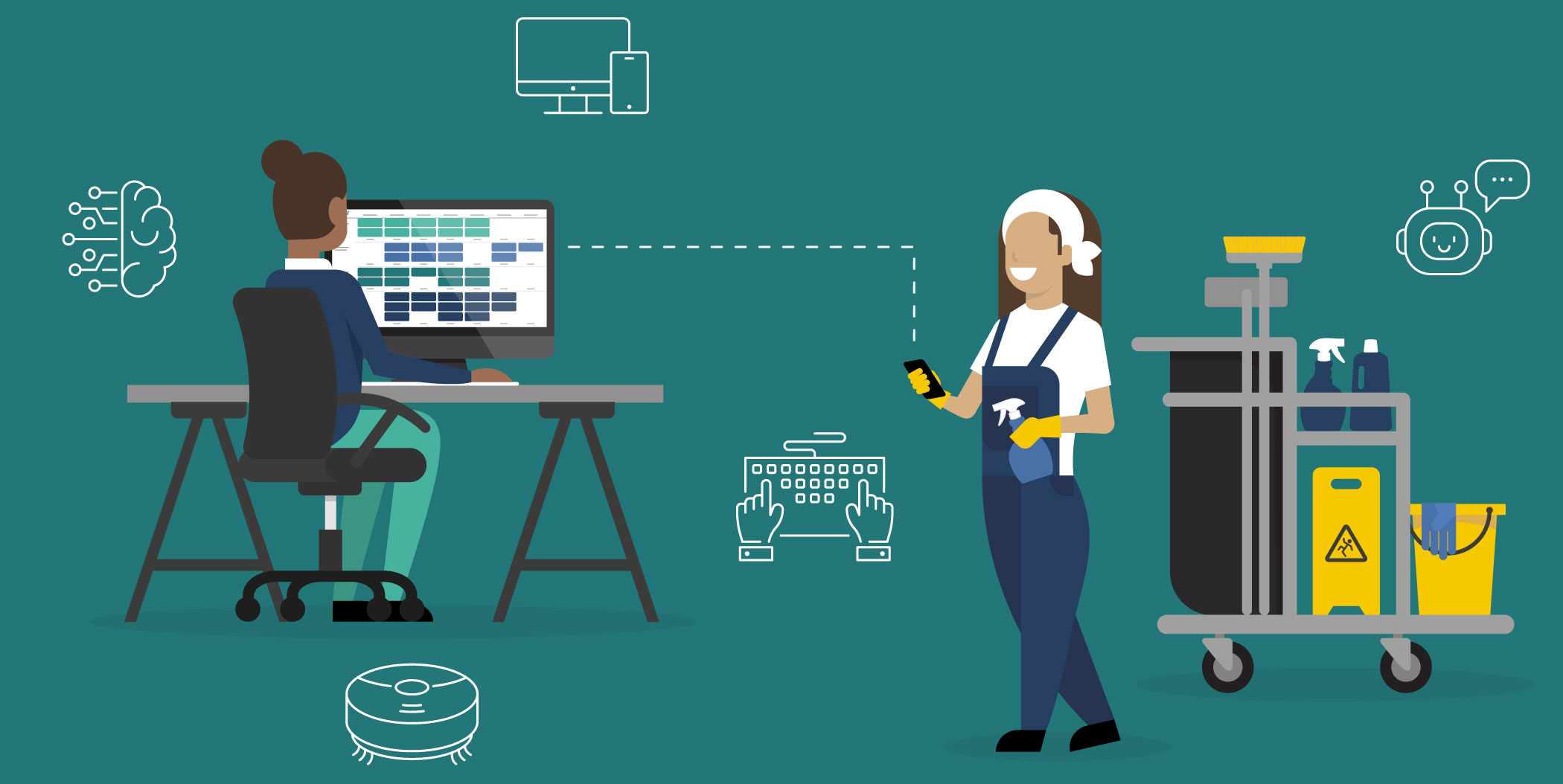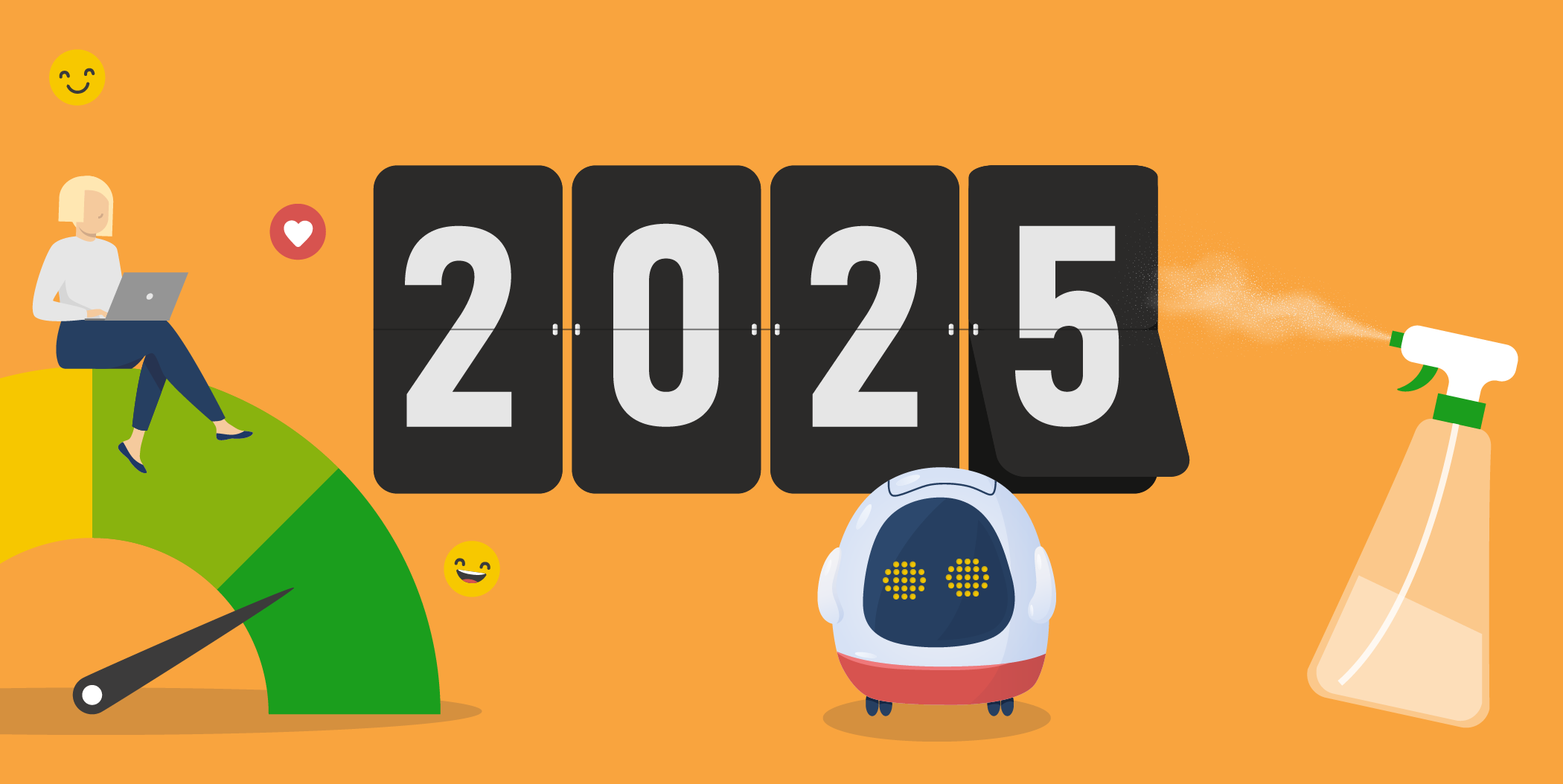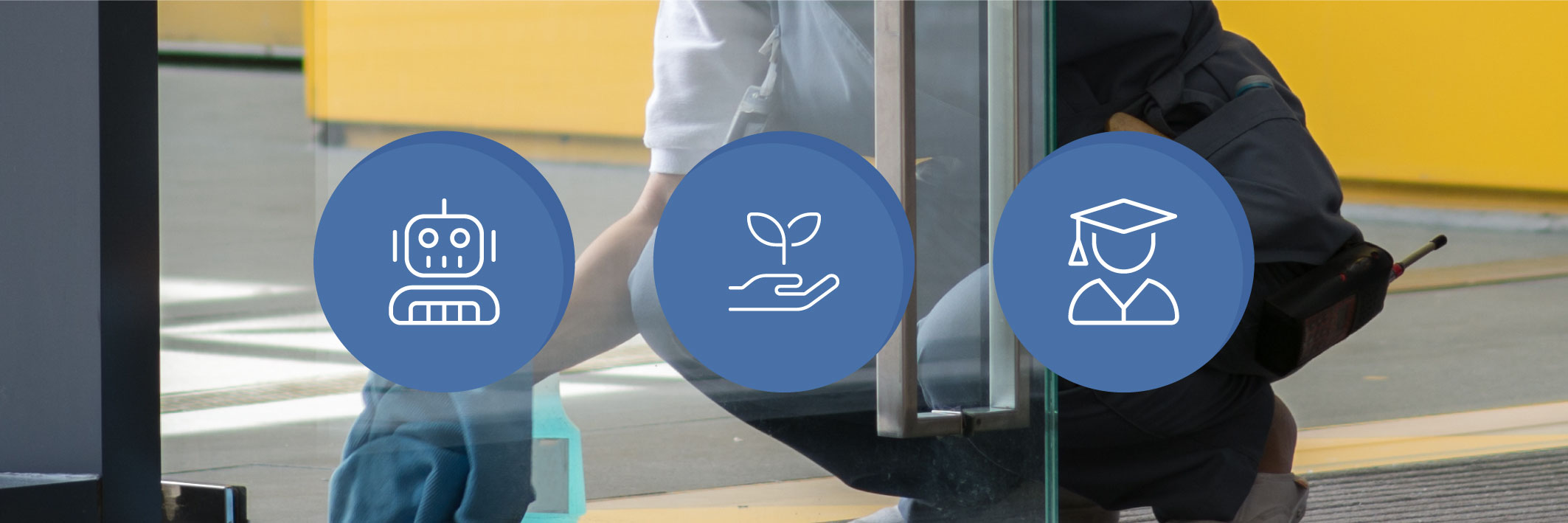Technological advancement moves swiftly, which offers companies innovative business opportunities. Yet, following this rapid pace and integrating new technology proves challenging. The cleaning industry is no exception. The cleaning landscape has shifted since Covid-19. There is heightened demand for quality and documentation amid the continued staff shortage. Embracing technology, digitalisation, and innovation may be the solution. Let’s explore the definitions of these terms and weigh their pros and cons for your cleaning business.
We use technology and digital tools every day in our digital age, including in the cleaning industry. Yet, comprehending every aspect of new technological solutions can be difficult. However, starting with understanding the relevant terms and their functions is a crucial first step. As you continue reading, you’ll find explanations of the three main components: Technology, digitalisation and innovation, along with examples of use in the cleaning industry.
Technology and Its Benefits in the Cleaning Industry
Technology is the use of scientific knowledge to solve real-life problems. It makes life easier both in professional and domestic settings. Everything that was ever invented by humans is a form of technology.
In the cleaning industry, technological advancements have introduced machinery and robots into cleaning. The technology has come a long way from mop and bucket, according to Spillz. In 1907 technological cleaning was ignited by James Spangler and his invention of the first motor-driven, portable vacuum cleaner. Since then, it has progressed to electric vacuum cleaners in the 1950s and robotic in the 1980s. And it didn’t stop there. Nowadays, robotic cleaners are automated with sensors that ensure spotless and precise cleaning.
Considering the recent issue with the staff shortage, the latest technology in automated cleaning offer stability and efficiency. With routine tasks automated, employees can focus on the rewarding and more complex tasks. Here are the pros and cons when using technology to clean:
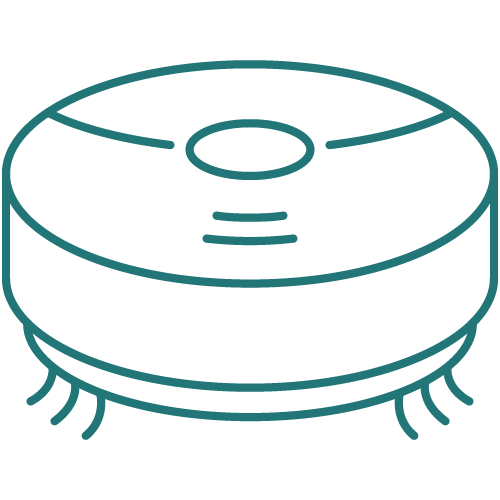
Pros
- Support and relieve staff workload.
- Enhance cleaning quality and make the quality consistent.
- Boost efficiency.
- New machinery and robots are designed to conserve water and soap compared to older equipment.
Cons
- Staff may fear job displacement or reduced working hours.
- New technology is expensive and requires a significant investment.
- Maintenance and knowledge is necessary for managing the technology.
The Digital Age of the Cleaning Industry
Digitalisation is the use of digital tools. Digital technology changes the internal processes of a business and creates new ways to grow both revenue and business value. With the widespread adaptation of the internet, it has become an essential tool for businesses. There are three digitalisation types, one of which holds greater relevance for a cleaning business than the other two.
- Digitisation → Moving analogue data to a digital format
- Digitalisation → Transforming from manual processes to digital automated processes, enhancing efficiency, increasing revenue, and reducing costs. The most relevant and accessible type for a cleaning company.
- Digital transformation → Drastically changing the entire business operation to become digital.
You are probably already engaged in digitisation and some aspects of digitalisation. Digitisation includes converting paper documents to a digital format, for example word or PDF, while using tools like Excel or other spreadsheet software is a part of digitalisation.
Using WhatsApp, email, or other communication apps is also digitalisation. It doesn’t have to be more high-tech than that. For smaller cleaning companies, digital transformation can seem expensive and overwhelming. However, digitisation and digitalisation are highly relevant for your cleaning business. Understanding both the benefits and potential challenges is important for making informed decisions. Here are a few pros and cons for implementing digitalisation:
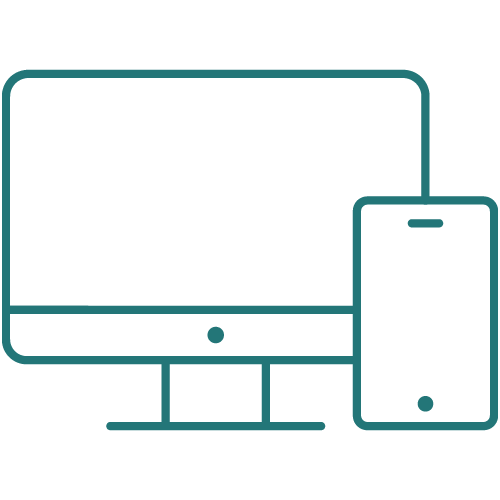
Pros
- Time saving.
- Improving efficiency.
- Simplifying data collection for analysing client needs and predicting cleaning requirements.
Cons
- Regular software expenses.
- Initial costs in time and money for implementing new digital tools.
- Requiring that employees change their habits, which is challenging for those who are unfamiliar with digital tools.
Weighing the Impact of Innovation and Its Connection to Technology and Digitalisation
Innovation is the process of creating new methods, ideas, services, or products. This could be using new technology and digital tools, as innovation is usually the reason behind the advancement of technology and digitalisation. You’ve likely heard about corporations who revolutionised the market, such as Netflix with streaming or Apple with the iPhone. However, innovation doesn’t have to require a large investment or have world-changing impact. Your cleaning company may already be practising innovation in various ways without you realising it. Here are the different types of innovation:
- Incremental innovation → Making small adjustments to a product, service, or process. This could be switching to environmentally conscious cleaning products.
- Radical innovation → Major innovations that reshape the market or create a new one. For example, when the electric vacuum cleaner was invented, changing the market of floor cleaning.
- Disruptive innovation → Disrupting the market with an innovation which replaces the existing market entirely. For example, the microfibre cloths.
- Architectural innovation → Changing the looks of a product or service, also called repackaging. This could be redesigning cleaning buckets to fit the colour or theme of a given cleaning company.
Considering the different types of innovation, it’s probable that your cleaning business have innovative employees who subtly enhance cleaning equipment usage. This is often unnoticeable from the outside. It’s also likely you do architectural innovation through customising your equipment and transport with logos etc. Innovation is also changing to digitalisation, as mentioned earlier, which quickly makes your cleaning business a lot more innovative than you might have thought. But again, it is important to reflect on the benefits and potential issues that innovation has for a business, so you can make the right choices. Here are a few pros and cons of innovation:

Pros
- Gaining a competitive advantage.
- Meeting client demands more effectively.
- Growing the business.
- Boosting efficiency and productivity.
- Attracting and attaining talent.
- Enhancing resilience and sustainability.
Cons
- Taking a high risk by investing in research, development, and implementation, with no guarantee for success.
- Causing staff concerns about job displacement because of innovative tech or digital tools.
- Facing unforeseen consequences when inventing new things and methods.
- Allocating significant time and resources required.
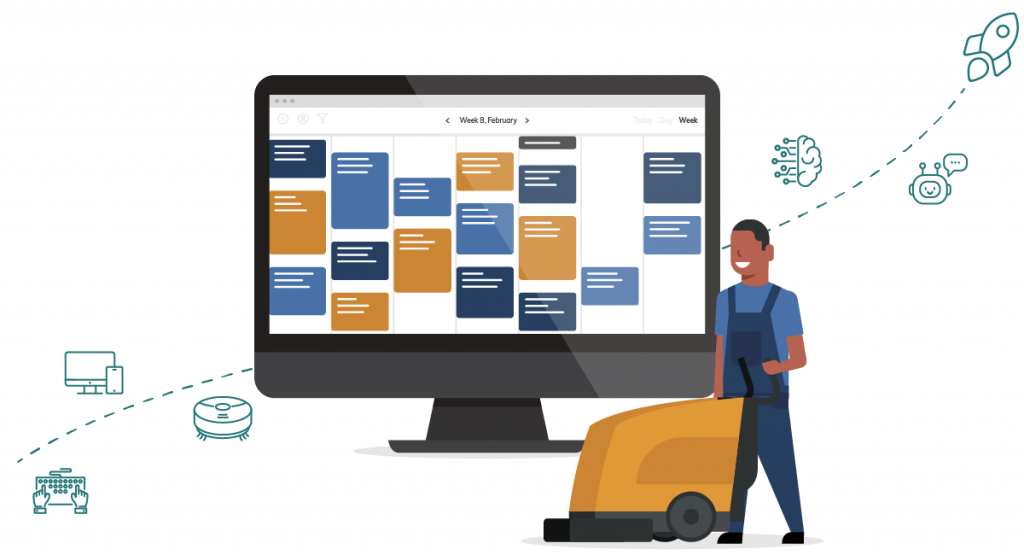
Reflecting on the Next Steps in Your Technological Journey
Now that you have an overview, the next step involves an introspective examination of your cleaning company. Start by identifying the specific challenges you’re facing. Is it the scheduling that’s giving you a headache, or perhaps the quality control that’s keeping you awake at night? Consider which technologies and digital tools can help with what you specifically need, while always weighing the enhanced effectiveness against time and investment costs, making sure you take the right decisions.
It is also vital to go through your administrative process and explore digital tools, such as apps or software solutions, that can reduce your workload.
Lastly, but perhaps most importantly, there is significant advantage in engaging with your employees about potential implementations. Understand their preferences and needs for optimising their daily work – they may offer valuable insights and innovative ideas. Resistance by employees is also easier to avoid if they are a part of the transformation process and the decision-making. They become ambassadors for new initiatives.
If they show interest in new technology, consider providing them with courses and education, not only for the new tech and digitalisation, but also innovation and development. If employees have the opportunity to develop competences and feel they have a voice in the company, it will strengthen employee retention and might even increase the employee loyalty.
Want to know more about the digitalisation and the software opportunities CleanManager has to offer? Then have an overview of what we offer, or have a chat with us, we are always happy to help.
